Cleaning systems and surface preparation are:
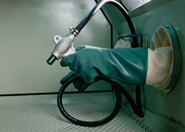 SHOOT BLAST
SHOOT BLAST
Is a treatment technique of surface cleaning by impact which may achieve a finished surface and simultaneously a correct surface finish.
It consists of the projection of abrasive particles at high speed which, on impact with the treated piece, produces the removal of surface contaminants.
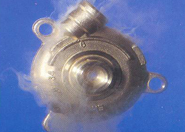 ULTRASONIC CLEANING
ULTRASONIC CLEANING
(from 25,000 to 55,000 hertz / second)
The ultrasonic cleaning is based on the principle of high-frequency waves produced in the fluid in which the pieces are immersed. The nature of the ultrasonic energy provides physical thrust required to break the mechanical and ionic bonds laying very small particles in the surface.
Because of working frequency and density of the fluid, are formed continuous depressions and pressures that come and go in a matter of microseconds in the liquid, making implode the water molecule, approximately 40,000 times per second, producing a microbrush acting around any element that is inserted. This effect is called ultrasonic cavitation, and removes dirt from the surface of the pieces submerged even in the most difficult access points. You can reach the internal areas that are not accessible with other means of cleaning.
This process focuses primarily for micro-cleaning and degreasing, in which the type of lubricant or grease is too difficult to remove by conventional methods.
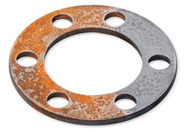 CHEMICAL CLEANING
CHEMICAL CLEANING
The effectiveness in cleaning and degreasing of metals is vital for all industries in which the production process the manufacture or Assembly of parts metal-mainly includes, automotive, aviation, rail and electrical appliances industries. During the various steps of the production process, oil, fluids and fats of the metal parts should be cleaned.
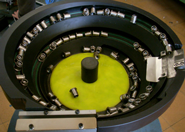 VIBRATION SYSTEMS
VIBRATION SYSTEMS
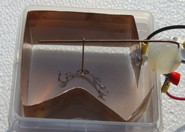 ELECTROLYTIC POLISHING
ELECTROLYTIC POLISHING
The electrolytic polishing is a procedure that involves preferentially dissolve different surface roughness of a piece. This process is a surface treatment by which to be polished metal acts as an anode in an electrolytic dissolving cell.
With the current application, forms a film polarized on the metallic surface under treatment, allowing metal ions diffuse through the film.
Micro and macro projections or high points of the rough surface as well as burrs areas are areas of higher current density than the rest of the surface, and dissolve more rapidly, resulting in a smoother surface. Simultaneously, and under controlled conditions of temperature and current intensity, is obtained a very shiny appearance on the surface of the pieces.

